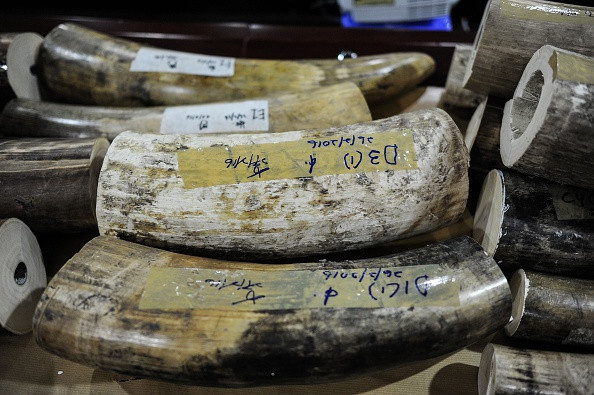World Wildlife Day 2016: Theme, facts and events celebrating 'future in our hands'

"The future of wildlife is in our hands". That is the theme of UN Wildlife Day, celebrated annually on the third of March. The message is that everyone can, and should, make a difference to protect wildlife.
This year marks the third anniversary of the event, created by the United Nations in 2013 to raise awareness of the dangers faced by the planet's fauna and flora. Overgrazing, habitat loss and intensive farming are some of the real and tangible challenges that wildlife face today. Thousands of species are considered endangered, according to the IUCN Red list.

Poaching and trafficking have further increased the risks, especially for elephants, the first victims of a lucrative ivory trade. It is estimated that the global elephant population is now below 500,000.
Though World Wildlife Day 2016 will raise awareness on all threatened species, the plight of the African and Asian elephants will be emphasized, with the tag line "The future of elephants is in our hands". Many events around the world will this year be dedicated to the largest land mammal.
2016 Events
A great variety of events, at local and national levels, are taking place this year. They range from exhibitions and contests to national parks visits and conferences. Anyone can see the events near them and add events they would like to oraganise via an interactive map on the World Day's website.
The UN has launched its very own art competition. The WWD2016 poster design contest is open to citizens in all countries in the hope they will submit artworks that reflect the day's key message: that the future is our hands, and that everyone must act now to avoid future devastating consequences to the planet's wildlife. Organisers started accepting entries on 22 February and will reward the winner with free tickets to South Africa.

In many countries, specific actions on elephant protection will take place. Asian and African countries, where the animals live, are particularly active. In Thailand, the day will be a good occasion to prepare for its Thai National Elephant Day, held ten days later on 13 March. Dusit Zoo in the south of the country will launch a new exhibition promoting the animal.
In Tanzania, the Global Sparkling Elephant campaign, an advocacy group for the conservation of elephants, will be put in the spotlight after running a marathon on 28 February with real size replicas of two elephants. In Chad, a large conference about the nation's plan to protect elephants will be organised.
In the UK, wildlife lovers will also be able to choose between different events. Local initiatives will include film screenings, featuring movies from the International Elephant Film festival, as well as school fundraisers or information stands. Tilgate Park Nature Centre will hold activities and public talks to tackle the issue of wildlife crime.
Background to World Wildlife Day
World Wildlife Day was created during the 68<sup>th session of the UN General Assembly on 20 December 2013.
The third day of March was chosen as the official date of the World Day to commemorate the anniversary of a major breakthrough for the protection of wildlife. 3 March 1973 was the date when the Convention on International Trade in endangered species (CITES) was signed.
The convention is an legally binding international agreement between 80 countries, and protects overs 35,000 threatened species of fauna and flora, including elephants. Its aim is to promote a sustainable wildlife trade, in other words, to ensure that the "trade in specimens of wild animals and plants does not threaten their survival".
Facts about elephants, the focus of World Wildlife Day 2016
Elephants are at the centre of World Wildlife Day 2016. They are amongst the most vulnerable animals onthe planet. Between 2010 and 2012, about 100,000 elephants were killed for their ivory.
There are two main types of elephants: the Asian elephant and the African Elephant. They differ in several way, the African elephant being much bigger. It can weight up to eight tons. While only a few Asian elephants have tusks, all African elephants, including females, have tusks.
Both populations have been threatened in the past few years. As of 2011, the world is losing more African elephants than the population can reproduce, threatening their very existence.
However, its Asian cousin is even more in danger of disappearing. The Asian elephant is present in 13 countries across Asia, but only 40,000 animals remain worldwide. That's less than a tenth of the African elephant population.
Elephants are poached for the ivory contained in their tusks, as the demand for ivory remains high, especially in China and the US, the two largest consumer markets for ivory. Between 2010 and 2014, the price of ivory in China has tripled, boosting illegal trafficking. One of the way to save elephants from extinction is by reducing the demand and by educating potential buyers on the issue, the ultimate goal of World Wildlife Day.
© Copyright IBTimes 2025. All rights reserved.






















